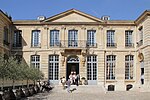Cour de Justice de la République

The Cour de Justice de la République (CJR, "Court of Justice of the Republic") is a special French court established to try cases of ministerial misconduct. Its remit only extends to government ministers (or former ministers) concerning offences committed in the exercise of their functions. It was instituted by President François Mitterrand on 27 July 1993 following the infected blood scandal, which saw three ministers, including then-Prime Minister Laurent Fabius, charged with manslaughter. Before that, ministers in France benefitted from a degree of judicial immunity. As of 2020, the court has formally charged ten ministers since it was established; five were found guilty. French ministers can still be tried in a regular French court, if the alleged offence is not related to their ministerial duties. Notably, Interior Minister Brice Hortefeux was fined in 2010 for making racial slurs. On 3 July 2017 President Emmanuel Macron announced his intention to abolish the court to have ministers tried by a regular Paris court, criticising the composition of the CJR.
Excerpt from the Wikipedia article Cour de Justice de la République (License: CC BY-SA 3.0, Authors, Images).Cour de Justice de la République
Rue de Constantine, Paris Faubourg Saint-Germain (Paris)
Geographical coordinates (GPS) Address Nearby Places Show on map
Geographical coordinates (GPS)
| Latitude | Longitude |
|---|---|
| N 48.859444444444 ° | E 2.3147222222222 ° |
Address
Direction Balard
Rue de Constantine
75007 Paris, Faubourg Saint-Germain (Paris)
Ile-de-France, France
Open on Google Maps









